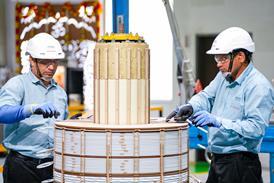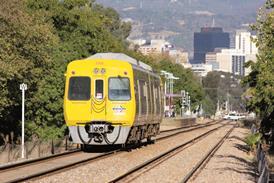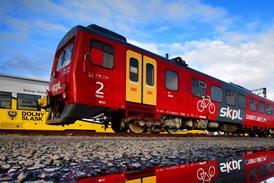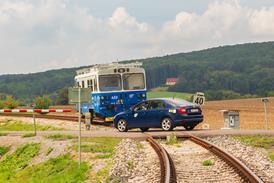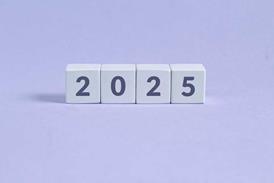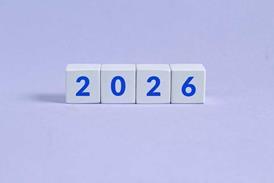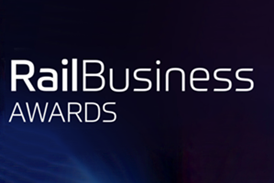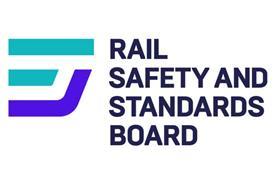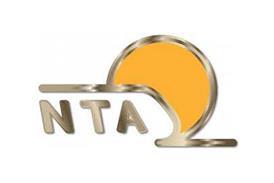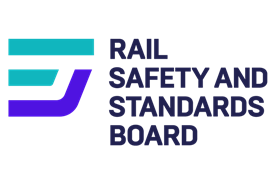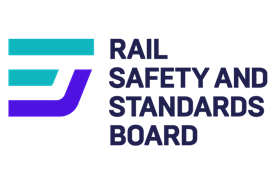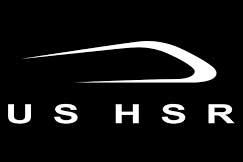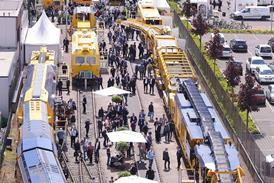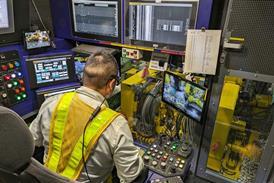Around the world society is changing; urbanization, digitalization, globalization, and changing demographics are expected to see a rapid increase in the demand for transportation.
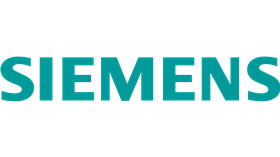
At the same time there is an increasing awareness that the need to address climate change is now critical; greenhouse gasses must be reduced and the use of the Earth’s natural resources needs to be better managed. Decisive action is needed and for railways this means a strong focus on decarbonisation and dematerialisation.
For Siemens this has meant the development of an eco-economic strategy that takes into account ecological and economic aspects, focusing on sustainability and eco-efficiency from the first step. With a proud history of railway vehicle manufacture Siemens Mobility has entered a new era, offering energy-efficient products which are no longer dependent on fossil fuels and outdated propulsion systems; going forward its trains will be powered either by electricity or by systems that use battery or hydrogen technology.
As Europe emerges from the COVID pandemic passenger numbers are beginning to increase and flows in many countries are expected to continue to grow steadily through to 2040 and beyond, there will be a need for new trains to replace ageing diesel multiple units with more environmentally friendly alternatives can make a major contribution to a CO2-neutral future.
In response to this challenge Siemens Mobility has developed its latest platform, Mireo, which it is offering with three different drive types:
- Electric multiple unit
- Battery electric multiple unit with a charging option via the overhead line (for partially electrified routes)
- Hydrogen-electric multiple units for longer non-electrified routes
Siemens Mobility reaffirms the widely held view that, wherever it is economically viable and technically feasible, conventional electrification using overhead lines is the best and most efficient solution for railways to replace diesel power. As well as requiring simpler to construct, lighter and easier to maintain rolling stock the electrical losses within the chain from generation to the trains are by far the lowest. On main lines and high density urban and suburban routes electrification is the solution that makes sense. However the company notes that on lightly used lines or on scenic routes, possibly in a heritage or scenic area, there are good reasons not to put wires along the track and other solutions must be found. So, despite the slightly lower efficiencies of both battery and hydrogen power they may still offer the best value solution in many cases and it is clear that environmentally friendly battery and hydrogen drives will predominate as replacements for diesel fleets in the future.
Siemens Mobility estimate that across Europe there are around 15,000 diesel multiple units that need to be replaced with more environmentally friendly alternatives.
Whilst developing the three different drive packages Siemens Mobility has worked to ensure that as far as possible the passenger and even the driving experience on each Mireo derivative is almost identical and with performance that is significantly better than today’s most modern diesel units.
Mireo offers rapid acceleration and maximum speed of 160 km/h which is valuable in ensuring regional services in particular can continue to be developed in a way that makes rail travel an attractive option and as both battery and hydrogen technologies develop it is expected that lower operational costs going forward will further close the gaps in the necessary investment compared to diesel trains. All variants of the Mireo family offer all the advantages of the proven commuter and regional train on a hybrid platform, including energy-saving operation, a flexible interior design, and economical maintenance and lifecycle costs. Mireo features improved aerodynamics and light-weight integral aluminium monocoque construction, the energy efficiency and optimization of all its components, also by using SiC technology. The drive components in particular operate at the optimal degree of efficiency whilst energy management also helps reduce energy consumption and noise, thanks to predictive driving. The company also points out that as far as the drivers are concerned there will be no difference in the way the cabs look and feel and the way the trains are driven. There will be instrumentation which shows battery charge levels and on the HMU drivers will be able to check the status of the fuel cells but otherwise the cab for all three trains is identical.
For Siemens Mobility the choice between the battery-electric multiple unit (BEMU) branded Mireo Plus B and the hydrogen-electric multiple unit (HMU), Mireo Plus H, comes down to the availability of the different power sources and the range that will be required for a train in daily operation. Mireo Plus B is as powerful as an EMU and is extremely energy-efficient and power-saving thanks to SiC (silicon carbide) technology. It offers an impressive acceleration of 1.1 m/s² and a top speed of 160 km/h in battery or catenary mode with a range of up to 120 km. All the technological components are installed on the roof or underfloor and batteries can be charged on the move on wired sections or in stations and depots via overhead cable contacts.
Mireo Plus H uses highly efficient fuel cells that allow for ranges between refuelling of between 600 and 1,000 km; again performance mirrors an EMU with a top speed of 160 km/h. Siemens notes that hydrogen (H2) is an ideal storage medium for electrical energy because it can easily be carried in tanks and reconverted to electricity (and water) in a hydrogen fuel cell. Due to their high power density, Siemens Mobility H2 trains typically require one tank stop at the depot per day whilst new state-of-the-art fuel cells, with twice the power density and a service life estimated at 34,000 operating hours, which is over three times the current market standard.
The company point out that Siemens offers all the elements in the supply chain for H2 trains from a single source, from wind power plants and electrolysers that generate hydrogen to depot storage and the on-board fuel cell technology as well as the trains themselves.
For both variants battery technology actually plays a vital role; on the HEMU units whilst the batteries are smaller than in BEMU sets the actual driving uses the batteries as they deliver a much higher performance in terms of acceleration and, and performance on the track. The fuel cells charge the batteries at a constant, optimum rate with the battery effectively acting as a fuel reservoir. On braking energy is also recovered and put back into the battery, further improving the train’s fuel efficiency. Whilst HEMU trains use two fuel cells, ensuring there is redundancy in the system, a complete shutdown of both cells still leaves a train with between 20 and 30km of range which will enable it to get to a station or place of safety in the event of a failure. The batteries can also be used to move trains round depots so that fuel cells do not have to be powered up for brief periods.
Siemens Mobility is aware of the concerns expressed by some people over the transport and storage of hydrogen, it notes that in some countries, such as the UK, it has been decided that hydrogen tanks must not be located beneath vehicles and additional safety measures must be put in place. Whilst it accepts these concerns it points out that whilst it is a fact that hydrogen can burn many people have misunderstood the risks, Elmar Zeiler, Head of Commuter and Regional Trains at Siemens Mobility, explains “People always believe it will explode but what they have forgotten from their chemistry classes is that this will only happen when you have at least one third oxygen, which isn’t the case in the environment. So from that perspective an explosion chemically is not possible.” In most cases the loading gauge allows the tanks and the fuel cells to be located in the roof of a Mireo unit so that even if there is an unexpected leak of the gas the fact that it is the lightest element means it will vent up and away from the vehicle safely. With regard to the UK and anywhere else where the gauge may prohibit roof mounting Elmar Zeiler adds “We also have ideas especially for UK market; we can put the fuel cell and also the tanks inside the carriage, it’s possible although we will need to adhere to additional safety mechanisms in case something goes wrong. However, overall we believe it is a safe technology and there are more than enough options to design it for infrastructures like the UK infrastructure which have a difficult envelope.” Whilst the onboard battery packs may have an operating life of between 10 and 15 years the fuel cell stacks will need more frequent replacement, with the current life expectancy standing from 5 to 10 years. As the technology matures fuel cells will undoubtedly work for longer before being replaced.
Clearly the hydrogen itself will need to be stored at very high pressure in order to ensure the trains have a reasonable range; rated pressure will be 350 bar, however the tanks are designed and tested for pressures up to 1300 bar and will have an operating life of 30 years. Fuelling is also relatively easy, with the aim being that it should be as quick and simple as refuelling a comparable diesel train. Working on a joint project with Deutsche Bahn and Deutsche Bahn Energy it has been demonstrated that a train can be filled with hydrogen within 15 minutes.
In terms of the fuel station itself and the transporting of hydrogen to these remote locations Siemens Mobility note that this can be simplified and made more efficient if a region decides to decarbonise across a number of sectors and creates refuelling hubs that can be used for rail and road, “If this encompasses buses, mail and other delivery services, even the milkman or whatever, when all vehicles switch to hydrogen, and you have a whole infrastructure, then it doesn’t matter whether a train or a bus or whatever comes to the fuelling station but you will have a very efficient environment or infrastructure to supply the vehicles.
This will be particularly efficient if the facility is located near to a source of sustainable energy such as a wind farm so that the hydrogen itself can be created locally. As with many proponents of hydrogen power Siemens Mobility agree that the gas must be created in a sustainable way if decarbonisation really is the aim of the rail industry. Experts point out that almost all of the world’s hydrogen currently comes from coal (brown hydrogen) and gas (grey), with the rest created from nuclear (pink) and renewable sources like hydro, wind and solar (green). The first two are referred to as “super-polluting” hydrogen as they also release carbon dioxide (CO2) and unburnt fugitive methane into the atmosphere. Ensuring that trains are powered by green hydrogen rather than hydrogen that have a worse carbon footprint than the diesel fuel it is to replace is certainly critical.
Experts agree that where possible direct electrification and batteries are the optimal solution for powering trains and the Mireo Plus B BEMUs will be the best option in many situations. The battery charging technology can be relatively simple, away from the electrified lines stations can be equipped with short sections of catenary enabling rapid charging at the end of a journey and as battery technology itself develops both the range and longevity of the battery packs is expected to improve rapidly. For the Mireo BEMU sets Siemens Mobility is offering the newer Lithium Titanate batteries rather than the more traditional Lithium-ion type used in many railway applications. Whilst Lithium Titanate cells are slightly heavier and have a lower capacity they have a longer operational life before any significant degradation and offer better performance overall. Elmar Zeiler explains “When we were looking at what we wanted to achieve, we wanted to be sure that people could safely and reliably from A to B. If there was a risk that after five years the train would stops half-way, then those people would not be happy. That was the key driver behind our decision to go for the more complex or high end technology on the on the battery side, it was a conscious decision. The aim for recharging is for this to be accomplished in 15 to 20 minutes at fast chargers located at the end of a route, enabling fast turn round of trains. However at depots an overnight slower charge will also allow the batteries to be optimised, rebalancing charge levels across all of the cells and improving the health and operating life of the batteries themselves.
One thing which is also true is that in five or ten years there will be completely new battery technology and then everything will be re-evaluated. A lot of companies in different industries are spending a lot of time effort and money to develop the technology further and we will also benefit.” To that end Siemens Mobility is ensuring that it will be a relatively easy process to replace the batteries installed on Mireo units, giving them a much longer operational life that keeps pace with developments. Meanwhile it is expected that the batteries on the Mireo Plus B sets will have a very good useful life “We feel comfortable that we can offer more than 10 years, beyond that it will depend on how the trains are used and what the track profiles are like and so on. 10 years shouldn’t be an issue and up to 15 years is possible.”
Developments in recycling of older batteries are also encouraging as Siemens Mobility looks to ensure as much of a train can be reused or recycled, Elmar Zeiler explains “We are very conscious of a train’s carbon footprint and in terms of sustainability we need to be sure that we can reuse as much as possible of the material we’re putting into the train as possible. It was something which was very much at the core of our thinking when we designed the Mireo platform, so when parts of the trains are being rebuilt or remodelled after 10 or 15 years then we want to recycle and reuse as much as possible and that includes the battery. Of course when a train is finally taken out of service, perhaps after 35 or 40 years, then everything should be recycled and ideally built into the next generation of trains. Our whole philosophy as a company is sustainability and we have given certain commitments in terms of carbon neutrality and other things. Of course in the European Union there is also legislation in this area and we are seeing more and more requirements which simply need to be adhered to. As a company we also understand that commercially maybe for a brief period it will be a bit more expensive, but in the long run we certainly believe that this is the right and only way to go.”
Siemens Mobility is also clear that whilst its initial target market has been in Europe it will be happy to supply Mireo trains anywhere in the world, Elmar Zeiler confirms “The trains are being built to the European TSI Norms, so we are happy to supply any customer who is happy with these norms. They are a standard gauge product so there could be additional requirements to adapt them for a different gauge but it can all be done.
In terms of the core technology, we are trying to set up a system which works and then it can be used anywhere.” Siemens Mobility also confirm that whilst the BEMU has been marketed initially as suitable for railways with 15kV or 25kV AC power supplies the technology could be adapted for 1.5kV or 3kV DC, where charging would actually be more simple.
Siemens Mobility is however clear that the Mireo Plus platform is targeted at the commuter and regional market where trains of two, three or maybe four vehicles are the usually operated. We do see this mainly as a technology for subsidiary lines, where you are transporting 100 to 200 people. For long distance, it makes sense to look at other solutions and for high speed trains we believe it will never be possible; using these power sources it doesn’t make sense to try to accelerate a train up to up to 250 or 300 km/h because it’s not efficient anymore.”
For Siemens Mobility the outlook is positive, “We want to replace all these old trains as quickly as possible and that’s clearly where we are. We see the economic benefit and most importantly the sustainability aspect and that’s what we want to achieve. We are telling the operators that we have a train which fulfils many of their needs, probably even all of them; we have put in a lot of effort into developing a system which is scalable, which is identical whether it’s an EMU, HMU or BMU and from that perspective, we believe we have a very flexible system which many customers can use for a range of applications.”

